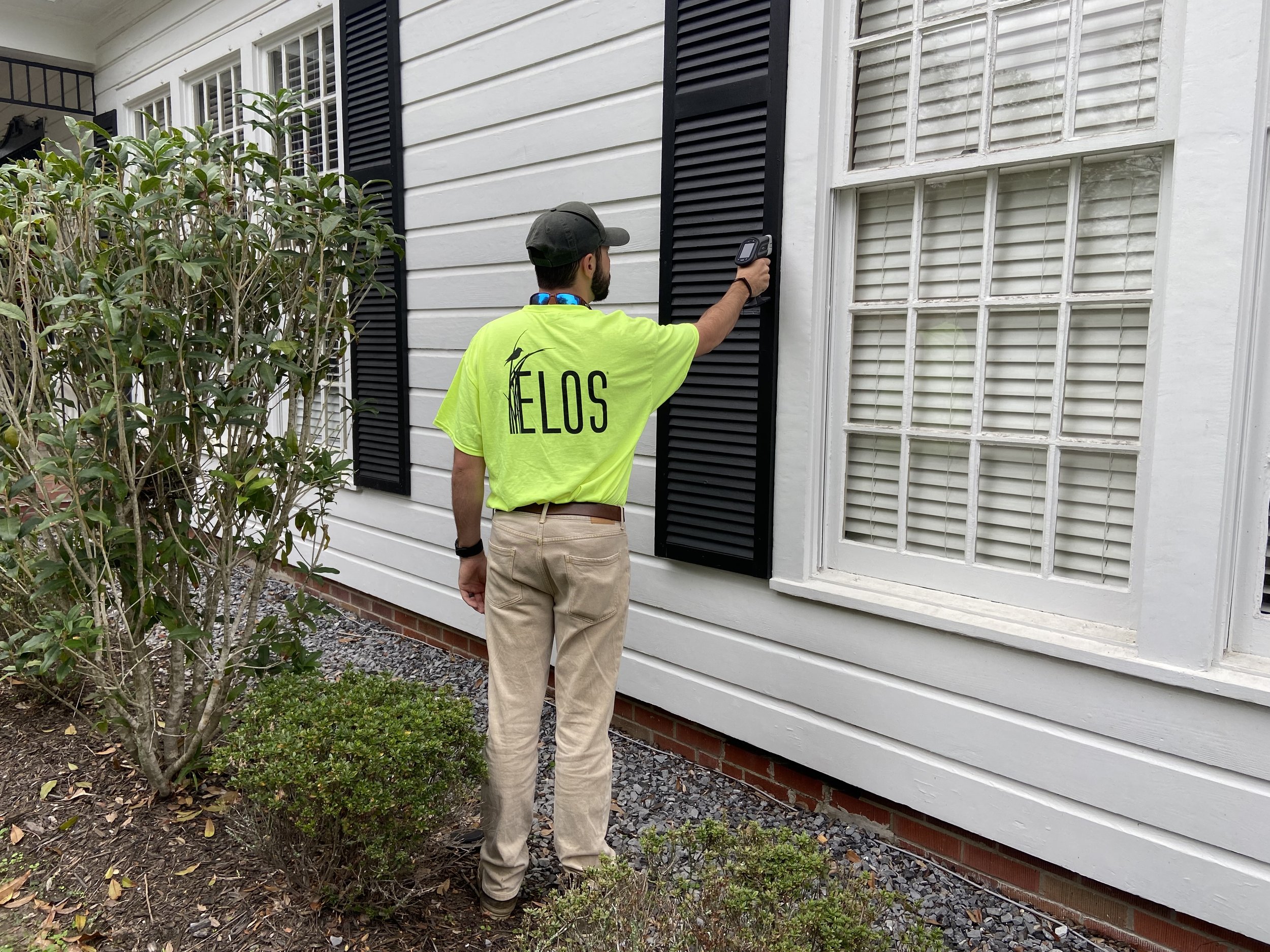
Environmental Services
national environmental protection act (nepa) compliance
The National Environmental Policy Act (NEPA) was signed into law on January 1, 1970. NEPA requires an assessment of the environmental effects of certain proposed actions. The range of actions covered by NEPA is broad and includes the following:
Making decisions on permit applications
Adopting federal land management actions
Constructing publicly-owned facilities and other infrastructure
ELOS is an expert in assisting clients in navigating the often-complex NEPA process. ELOS can evaluate the environmental and related social and economic effects of proposed actions and assist clients in steering their projects to minimize negative impacts to facilitate NEPA compliance. We can also coordinate all public review and comment periods on those evaluations.
Environmental Services
environmental due diligence
ELOS personnel have extensive experience in providing environmental due diligence services to mergers and acquisitions and investor communities. We have directed or maintained significant roles in multi-million to multi-billion dollar projects involving various types of industries, from large national convenience store chains to multinational diversified manufacturing.
environmental impact assessment
ELOS’ professionals have extensive experience conducting Environmental Impact Assessments (EIAs) for private, commercial, state, and federal entities. Our scientists have completed a wide range of EIAs, from single sites to large-scale programmatic or multi-site construction activities.
categorical exclusions
Projects determined to have little or no significant environmental impacts are classified as Categorical Exclusions (CEs) under NEPA. This determination is reached once federal funding agencies have received documentation that outlines any potential impacts a project may have on environmental, cultural, and economic resources.
ELOS can conduct background research required for federal agencies to determine if a project meets the criteria for a CE. Once a decision is reached, ELOS can coordinate with federal and state agencies, guide clients through the NEPA process, and provide all documentation necessary for a CE.
ELOS has completed CEs for numerous projects funded through federal agencies such as the U.S. Department of Housing and Urban Development (HUD), the Federal Emergency Management Agency (FEMA), and the Louisiana Department of Transportation and Development (LA DOTD).

phase I, II, and III environmental site assessments
With the passage of the Comprehensive Environmental Response, Compensation, and Liability Act (CERCLA) in 1980, owners and purchasers of properties and businesses may be placed in a serious liability situation if a purchased property is contaminated with toxic or hazardous substances.
An Environmental Site Assessment (ESA) provides the buyer, seller, developer, and financial institution with the information necessary to evaluate and negotiate property acquisitions from a position of strength. A corporation, banker, lawyer, realtor, or investor who becomes more knowledgeable in assessing and minimizing the risks will be more comfortable with the real estate transaction and have more protection against personal or corporate liability.
Phase I Environmental Site Assessment
The purpose of a Phase I Environmental Site Assessment (ESA) is to determine the environmental condition of the property and identify possible environmental contamination. It is a detailed report that researches and assesses a property’s current and historical environmental uses.
A Phase I ESA includes, but is not limited to, an on-site inspection, interviews, regulatory database reviews, and non-invasive examination that looks for:
Potential soil contamination
Groundwater and surface water quality
Asbestos-, lead-, or mold-containing building materials
Hazardous materials storage
Potential sources of hydrocarbon contaminants
Potential sources of chemical residues and PFAS (“forever chemicals”)
Potential sources of dead vegetation
An inventory of hazardous substances stored/used on site
Phase II Environmental Site Assessment
A Phase II ESA is undertaken when a Phase I ESA determines a likelihood of site contamination. The purpose is to analyze for qualitative and quantitative values of various contaminants.
It includes collecting in-situ samples of soil, hydrocarbons, groundwater, and building materials. A Phase II ESA may also include groundwater monitoring, fate and transport studies, 3D modeling, and the design of feasibility studies for remediation and remedial planning.
The most frequent substances tested are petroleum hydrocarbons, heavy metals, pesticides, solvents, asbestos, and polychlorinated biphenyls (PCBs).
Phase III Environmental Site Assessment
A Phase III ESA is remediation of a contaminated site. It consists of the development and implementation of a Risk-Based Remediation Action Plan, assessing alternative cleanup methods, cost/benefit analysis, and logistics.
Your Partner in Progress.
brownfields program
The Environmental Protection Agency’s (EPA) Brownfields Program provides grants and technical assistance to assess, safely clean up, and sustainably reuse contaminated properties. Revitalizing contaminated properties transforms not just the land but also the surrounding communities.
Brownfield sites may be small parcels in your local neighborhood or large abandoned industrial properties. The presence of contamination, or the fear of potential contamination, and the desire to redevelop/reuse a property is all it takes to be considered a candidate for Brownfield incentives.
Depending on the location and characteristics of the property and market factors, a Brownfield site can often be redeveloped for uses ranging from housing, retail, industrial, or mixed-use to public and nonprofit uses such as parks, recreational areas, and municipal facilities.
Benefits of Addressing Brownfield Sites
ELOS’ experienced team can help you identify potential Brownfield sites and provide the agency coordination to both get the property into the program and help you navigate through the complete process that may include additional tax credits and financial incentives.
Helps address legacy contamination at abandoned sites more expediently
Provides liability protection for non-responsible parties, thereby incentivizing developers to repurpose Brownfield sites
Returns properties to tax rolls and increases the tax base
Adds jobs both during the cleanup and construction phases and after the redevelopment is complete
Reduces blight in communities and residents’ risk of exposure to environmental contamination
soil & groundwater investigations
At ELOS, you will find every soil and groundwater service you need, from performing studies of groundwater contamination events to installation of state-of-the-art remedial systems. We maintain the equipment and personnel to provide geophysical logging, pumping tests, and aquifer studies necessary for complete groundwater evaluations.
We also specialize in the investigation of facilities where contamination has taken place, as well as groundwater restoration and treatment. Our professionals’ experience in working with regulatory agencies enables our clients to effectively reach compliance with applicable regulations and laws, including the Resource Conservation and Recovery Act (RCRA), the Clean Water Act (CWA), the Safe Drinking Water Act (SDWA), and the National Pollutant Discharge Elimination System (NPDES) regulations.
You will not find another company more experienced or committed to providing the groundwater services you need to ensure clean, uncontaminated groundwater. Our services include:
Compliance with RCRA
Performing studies of groundwater contamination events
Preparation of detailed technical reports documenting hydrogeological conditions, findings of studies and recommendations
Design and implementation of remedial action plans for contamination situations
Preparation of groundwater monitoring plans
Installation of state-of-the-art monitoring wells
Geophysical logging of wells
environmental remediation services
ELOS’ remediation professionals include environmental scientists, chemists, geologists, supervisors, equipment operators, and hazardous materials technicians with the ability to provide clients with common-sense, cost-effective solutions to their needs, without compromising quality.
Remediation services include:
Underground storage tank or aboveground storage tank services, including tank removal or closure-in-place, tank installations, and tank cleaning
Treatment of soil, groundwater, and sludges (chemical and biological)
Soil Vapor Extraction (SVE) system installation and operation
Groundwater extraction system installation and operation
Hazardous waste site cleanup (surface and subsurface)
Dewatering of hazardous and non-hazardous sludges
Drum characterization and disposal
Chemical transfers
Lab packs
Disposal of hazardous and non-hazardous waste for generators to maintain or gain RCRA compliance
Landfarming, soil burning, and disposal arrangements
Facilities decontamination and/or restoration or demolition
Scheduled industrial maintenance, including tank cleaning
air quality services
ELOS’ air quality specialists have extensive experience planning and executing the technical aspects of compliance. Our personnel are familiar with all regulated parameters and are well positioned to address the many complex issues emerging from the Clean Air Act Amendments, state and local regulations, and the National Emission Standard for Hazardous Air Pollutants (NESHAP) by providing services such as:
Title V Permitting
Prevention of Significant Deterioration (PSD)
Major sources
Compliance with national ambient air quality standards
Air Toxics
Maximum Available Control Technology (MACT)
Source categories
Early reduction studies
Environmental Compliance Audits and Emissions Inventory
Water / wastewater / stormwater permitting
ELOS’ services range from the design of groundwater monitoring plans and installation of monitoring wells to regional water resources planning. Our associates are experts at developing feedwater systems for reverse osmosis, geophysical logging, pumping tests, and aquifer studies necessary for complete groundwater evaluations.
Our professionals’ experience in working with regulatory agencies enables you to effectively reach compliance with applicable regulations and laws, including RCRA, CWA, EPA, SDWA, LDEQ, LDQ, and NPDES regulations. Water and wastewater services include:
Water supply studies RCRA corrective action
Regional water resources planning
Reverse osmosis feedwater systems
Irrigation water supply
Water quality investigations
Saltwater intrusion control
Injection well technology
Preparation of groundwater monitoring plans
Sampling and analysis plans
Installation of state-of-the-art monitoring wells
Geophysical logging of wells
Performing studies of groundwater contamination events
Design and implementation of remedial actions for contamination situations
Wastewater treatment plant design
Water and wastewater treatment system design, retrofit, operations, and maintenance
Environmental audits
Effluent use/reuse
Permitting, quarterly and annual reporting
Process evaluations
Remedial investigations and contamination studies
Remedial action plan design and implementation
Stormwater Pollution Prevention Plans (SWPPP)
Solutions you can trust.
solid & Hazardous waste
Solid Waste Management Services
As the importance of proper management of the wastes produced daily in every industry has grown, ELOS’ professionals have become recognized for their expertise in this area. Our personnel and scientists achieve compliance with regulatory requirements through a blend of innovative technologies supported by sound, practical application of traditional expertise - a blend that is increasingly important because of the pace of regulatory change in solid waste management.
Clients benefit from our thorough understanding of the demands of regulatory agencies and the realities of waste facility management. The diverse group of professionals at ELOS distinguishes us as one of the few consulting firms that can offer the complete range of services required for quality solid waste management, including:
Landfill design
Compliance with Subtitle D of RCRA Site selection assistance
Solid waste facilities design
Construction observation and inspection
Environmental audits
Remedial investigations
Feasibility studies
Waste analysis plans
Contingency and emergency plans
Site security plans
Closure plans
Facility description
Facility closure
Closure certification and construction management
Remedial action plan design and implementation
Process information for all facility activities
Hazardous Waste Management Services
ELOS is a multi-disciplinary firm with the capabilities and experience to assist industries in meeting the many challenges associated with hazardous or toxic materials and waste quickly and cost-effectively. Our certified personnel and hazardous materials managers can provide the technical support and expertise necessary to minimize the cost and maximize the effectiveness of hazardous materials and waste management programs.
Permitting Services
Facility siting
RCRA Part A and Part B permitting
State and local requirements
Spill Prevention Controls and Countermeasure (SPCC) plans
Waste determination and characterization
Expert representation at regulatory agency and public hearings
Negotiation of permit conditions
Stormwater runoff (NPDES)
Air emissions evaluation and reporting
Operation and Compliance Services
Technical representation during rulemaking
Environmental monitoring
Compliance audit and maintenance programs
SARA Title III programs
Support in hazardous waste delisting
Waste minimization/recycling programs
Technical support during enforcement actions
Closure assessment and monitoring
Contamination assessment and remediation services
RCRA corrective action programs
Superfund remedial investigations/feasibility studies
Actions
Contaminant fate and transport modeling
Risk assessments and development of alternate site rehabilitation levels
Contamination assessment reports and remedial action plans for non-superfund sites
Solid waste management units assessment and remediation
Quality assurance project plans for both superfund and state projects
Negotiations with regulatory agencies at federal, state, and local levels
industrial hygiene services
Trust our team to provide the accurate information needed to inform decision-making, ensure the safety of workers and occupants, and meet regulatory requirements. Our staff members consist of certified EPA—and DEQ-licensed lead paint inspectors and risk assessors, DEQ-certified asbestos inspectors and air monitors, experienced mold technicians, and certified Industrial Hygienists.
ELOS regularly provides clients with:
Program audits to assess compliance with regulatory requirements
Evaluation of worker exposure to potentially hazardous substances
Development of written protection strategies to control environmental hazards
Development of written health and safety plans
Development and implementation of training programs
Development and implementation of field sampling strategies for workplace exposure
Written recommendations from field study results to minimize employee exposure
Development and implementation of indoor air quality investigations (Sick Building Syndrome)
Mold
Mold is everywhere, but it only becomes a problem when high concentrations cause problems to human health or damage to property.
When these conditions arise, ELOS tests for mold using industry-standard techniques, such as swab sampling, tape lift sampling, and air sampling. Our professionals also use cutting-edge infrared imaging and moisture reading instruments to detect and note conditions that are likely to lead to future microbial growth hazards. The results of these tests, along with experienced observation, allow our professionals to provide data-supported measurements of the type and amount of mold present and identify potentially hazardous conditions.
Lead-Based Paint Testing
Lead is a toxic metal that can have potentially harmful health effects if absorbed into the body, especially for children. Lead-based paint can be found in buildings built before the U.S. Consumer Product Safety Commission banned the use of lead-based paint in 1978.
ELOS’ staff of DEQ- and EPA-licensed lead paint inspectors and risk assessors use state-of-the-art, non-invasive testing methods to test for lead-based paint products in structures for private, commercial, and government entities, as well as to assess paint condition to note whether it is in a hazardous, deteriorating condition.
Using X-Ray Fluorescence (XRF) analyzers, our professionals can quickly and accurately measure the content of lead in painted surfaces throughout a structure. The XRF analyzer provides results instantly and with no need to disturb or damage the painted surface. The use of XRF technology means cost and time savings for our clients by eliminating the need for laboratory analysis of paint chip samples
Asbestos Testing
Asbestos is a naturally occurring mineral composed of soft, flexible fibers that are heat resistant. The Asbestos Hazard Emergency Response Act of 1986 legally recognizes six forms of asbestos that are harmful to human health. The use of asbestos in construction materials was banned in 1989.
When it comes to asbestos, precaution and safety are critical. ELOS’ DEQ-certified asbestos inspectors are trained and experienced in recognizing materials that are typically suspect for asbestos. ELOS inspectors have completed inspections and surveys for private, commercial, and government clients and are experts in the regulations that govern the proper handling of asbestos-containing materials.
Our inspectors work with clients to ensure that inspection and sampling methods are thorough, ensuring no hazardous asbestos-containing materials go unnoticed, while also being as cost-effective as possible to suit our client’s budgetary needs. If you have any concerns that your project may disturb asbestos-containing materials, let our professionals take the fear of the unknown away by providing you with the answers and information you need.
Asbestos Air Monitoring
During remediation efforts, asbestos air monitoring services are critical for ensuring the safety of environments where asbestos-containing materials (ACMs) are present or have been disturbed. These services help detect and measure airborne asbestos fibers, ensuring compliance with safety regulations and minimizing health risks.
With National Institute for Occupational Safety and Health (NIOSH)-certified technicians on staff, ELOS can provide real-time analysis at any remediation project site using Phase Contrast Microscopy (PCM), including:
Construction sites
Industrial facilities
Schools and public buildings
Waste disposal sites
Disaster response areas
Residential properties
Medical or laboratory facilities
The NIOSH 7400 guidelines followed by ELOS staff members ensure adherence to Occupational Safety and Health Administration (OSHA) and Environmental Protection Agency (EPA) standards for asbestos exposure monitoring and facilitate the preparation of air sampling data and reports.
In addition, having a technician on site allows for immediate analysis and eliminates the need to have samples sent to a laboratory for review, saving immeasurable time and expense for our clients. Our technicians are available to be on site seven days a week, 365 days a year.
Industrial Hygiene Services in Disaster Recovery
Industrial Hygiene services play an important role in disaster recovery, particularly in situations involving water damage from floods or hurricanes. The presence of excess moisture creates an ideal environment for mold growth, which can pose serious health risks and cause further damage to structures. Mold testing services help identify, assess, and guide the remediation of mold issues during disaster recovery.
Mold testing after a hurricane is a critical step in ensuring that buildings and homes affected by flooding and water damage are safe for occupancy. Hurricanes often cause widespread water intrusion due to heavy rains, storm surges, and broken windows or roofs, leading to damp conditions that foster mold growth. Industrial Hygiene services are especially important for protecting the health of building occupants, recovery workers, and the structural integrity of affected buildings.










